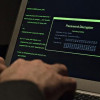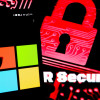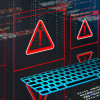The Real Hacker Threat to Election Day? Data Deception and Denial
Hacks, data leaks, and disinformation have all added to the chaos of one of the most contentious elections in history. US intelligence agencies have even accused Russia of perpetrating some portion of the digital meddling. And now reports indicate that officials are preparing for worst-case cybersecurity scenarios on November 8. But what might those election day digital threats realistically look like?
Government officials and the media have been worried over the possibilities of attacks that might hack voting machines, leak last-minute November surprises about candidates, or even sabotage the power grid. But ask the cybersecurity community, and they’ll tell you the easiest way to hack the election is a simpler, two-pronged attack: Black out sources of real information and spread disinformation.
“They’re going to try to influence this election further using a combination of things like additional leaks, DDoS attacks, and targeting the media,” says Adam Meyers, vice president of intelligence at the security firm CrowdStrike. “What better way to destabilize a country without a shot being fired than by leveraging these various tools to play with people?”









































































